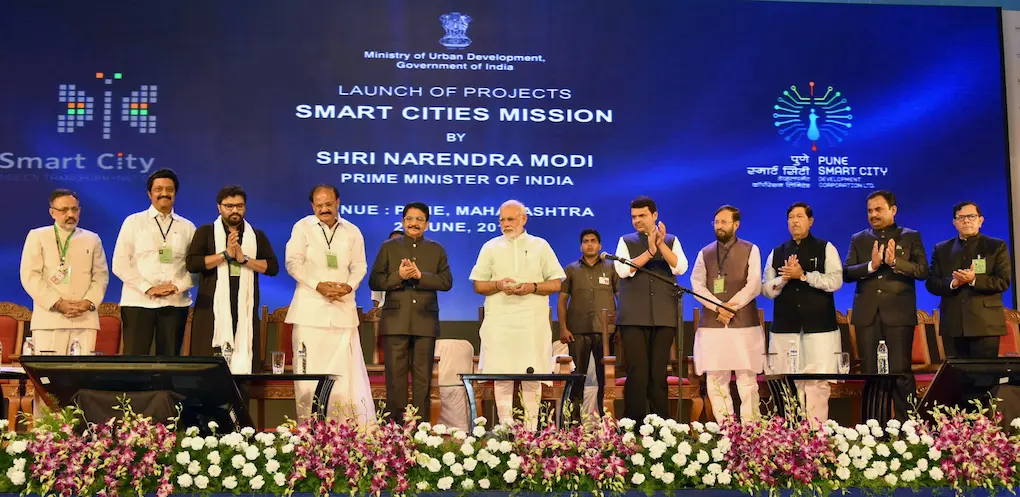
India’s Smart Cities Mission reshapes urban living with tech-driven solutions, cleaner infrastructure
What Is the Smart Cities Mission?
Launched in June 2015, the Smart Cities Mission is a major initiative by the Government of India to improve the quality of life in urban areas. The goal is to make cities more efficient, sustainable, and citizen-friendly by using technology and smart planning.
A total of 100 cities were selected for transformation under this mission. These cities were chosen based on their readiness to improve infrastructure, governance, and public services. The mission focuses on two main approaches:
- Area-Based Development (ABD): Improving a specific part of the city to serve as a model for other areas.
- Pan-City Solutions: Using smart technologies across the entire city, such as smart traffic systems, digital governance, and waste management.
The mission aims to create cities that are cleaner, safer, and more connected, while also promoting economic growth and environmental sustainability.
Progress So Far: Projects and Achievements
As of July 2025, the Smart Cities Mission has completed 7,636 projects worth over ₹1.53 lakh crore across India. These projects cover key areas like:
- Smart Mobility: Electric buses, bicycle-sharing systems, and intelligent traffic signals.
- Water and Sanitation: IoT-enabled water supply, smart toilets, and waste-to-energy plants.
- Digital Governance: Mobile apps for public services, online grievance redressal, and e-payments.
- Energy Efficiency: Solar-powered streetlights and smart meters for electricity and water.
Cities like Ahmedabad, Pune, Surat, Indore, and Coimbatore have emerged as leaders in smart city innovation. For example, Pune’s Command and Control Center monitors traffic, waste, and emergency services in real time, while Surat has installed early flood warning systems to protect citizens during monsoons.
In Tirupati, officials are working to complete the Integrated Command and Control Center (ICCC) by November 2025, which will improve surveillance and urban management across the city.
Challenges and Lessons Learned
While the mission has made strong progress, it has also faced several challenges:
- Slow Implementation: Some cities have struggled with delays due to land issues, legal disputes, and lack of skilled manpower.
- Funding Gaps: Although the central government provided ₹47,652 crore, many states and local bodies have not matched the required financial support.
- Maintenance Issues: In some cities, smart infrastructure like LED streetlights and digital kiosks are poorly maintained or underused.
- Data Security: With thousands of sensors and devices collecting data daily, protecting citizen privacy has become a major concern.
Despite these hurdles, the mission has encouraged cities to think differently and adopt citizen-first planning. It has also inspired new ideas like Smart Villages, which aim to bring similar benefits to rural areas.
What’s Next for India’s Smart Cities?
The future of India’s urban development looks promising. By March 2025, 94% of all Smart Cities Mission projects were completed, and the remaining are in advanced stages. The government is now focusing on:
- Expanding metro networks: Over 1,055 km of metro rail is operational across 24 cities, with more projects underway.
- Deploying electric buses: The PM-eBus Sewa Scheme will support 10,000 e-buses with ₹20,000 crore in funding.
- Open Data Platforms: Cities are using public data to improve services and even generate revenue through insights on traffic, energy use, and waste management.
- Smart and Intelligent Villages: Inspired by urban success, rural areas are adopting digital tools for education, healthcare, and farming.
The Smart Cities Mission is not just about technology, it’s about making cities more livable, inclusive, and future-ready. With continued innovation and citizen participation, India is on track to become a global leader in smart urban development.
Conclusion:
India’s Smart Cities Mission is transforming how cities function and how people live. From cleaner streets to faster transport and digital services, the mission is building a better tomorrow, one smart solution at a time. As more cities complete their projects and new ideas emerge, the dream of a truly smart India is becoming a reality.
Also read – How PM Awas Yojana Is Building India’s Affordable Housing Revolution
Stay informed with the latest news and updates – only on Rapido Updates.